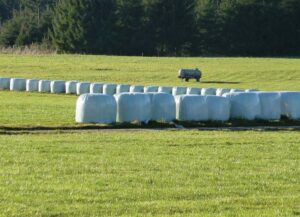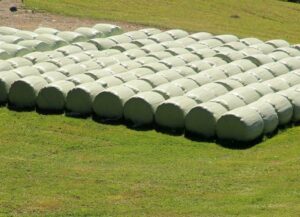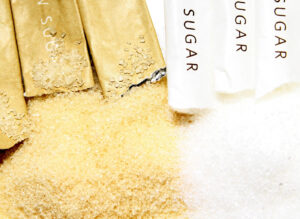Alvaro Garcia
Timothy grass (Phleum pratense) is a perennial grass originally from northern Europe. It is a tall grass species which can grow up to 1.5 m at the reproductive stage. It performs well in heavy, poor sandy soils, and is resistant to cold weather and dry conditions. As other grass species it requires adequate soil nitrogen for optimal growth.
Timothy and other cool season grasses generally respond well to nitrogen fertilization, with 20 to 25 kg of herbage dry matter produced yearly per kg of nitrogen/hectare. Response is related to the original nitrogen availability in the soil, with a greater response in more deficient areas.
Nitrogen fertilization
The timeline of the nitrogen application also affects the quality of the sward. When applied later into the growing season it leads to more vegetative growth compared to tall, more hardened stems earlier in the season. This is an important consideration depending on the region since vegetative growth is desirable for quality, although it may also lead to more winter damage.
It is important then to optimize fertilization rates such that they not only increase herbage dry matter production, but also result in forage that withstands the cold season while still maintains adequate quality. As with other grasses, nitrogen fertilization increases not only the crude protein content of the plant but also its concentration in nitrates, which could be potentially toxic to ruminants.
Since its incorporation into the plant follows a curvilinear relationship, excessive fertilization can lead to nitrogen accumulation. This poses environmental risks since the nitrogen not incorporated into plant tissues can volatilize as nitrous oxide (greenhouse gas), and leach as nitrate into the soil and potentially the groundwater. An adequate balance between nitrogen fertilization and potential for utilization is thus critical, with traditional application rates going from 0 to 450 kg of nitrogen per hectare.
Earlier research has found that the highest forage DM yields obtained were 8,500 kg dry matter per hectare, with nitrogen applications of 325 kg per hectare/year with higher yields obtained more recently. There needs to be a careful evaluation however of what is the optimum amount of fertilizer to maximize forage yield while minimizing the environmental impact excesses.
A recent experiment performed in two Finnish sites (Termonen et al. 2019) compared the differences between nitrogen response with a meta-analysis of the results from older experiments. One additional objective was to better assess the physiology, nutritive value and efficiency of nitrogen utilization at different application rates. The two fields selected had been used for growing grass and cereals without any organic fertilizers for several years.
Soil samples for analyses were obtained by triplicate core samples from 0–20 cm to 20–40 cm deep. The soil was analyzed for texture, fertility (pH, K and P), and total organic C. The content of organic matter was calculated as 1.724 × total organic C content. The topsoil layer (0–20 cm) in one of the sites consisted of 9% clay, 41% silt and 50% sand, and in the other 18% clay, 53% silt and 29% sand.
The content of organic matter was 2.7% in one site and 5.4% in the other. Plots were arranged according to an incomplete split plot design with four replicates. Nitrogen balance were evaluated, with nitrogen application rates of 0, 150, 200, 250, 300, 350, 400 and 450 kg of nitrogen per hectare/year. Two cultivars of timothy (“Grindstad” and “Nuutti”) were sown at a rate of 3,000 seeds/m2.
Cultivar “Grindstad” is known for its high yields, whereas “Nuutti” is high yielding and highly digestible. Seed was sown in rows spaced 12.5 cm following the application of fertilizers and seeding of barley as a cover crop which was later harvested for grain. The grass was harvested three times per season.
What is the optimum amount of fertilizer to maximize forage yield?
Results of this experiment showed an increase in herbage dry matter yield in response to nitrogen fertilization. The optimum balance for nitrogen application was obtained by using 390 kg of nitrogen per hectare/year. A maximum crude protein of 14.0% dry matter was obtained with 325 kg of nitrogen per hectare.
The fertilization rate of 340 kg nitrogen per hectare/year had the maximum nitrogen balance at 60 kg of nitrogen per hectare/year. Increasing nitrogen rates led to decreases in digestibility so, if the goal is to obtain good quality forage, grass grown with higher nitrogen application rates needs to be utilized earlier.
Higher rates of nitrogen application increased the stems proportion and led to higher crude protein in all cuts. Maximum crude protein was at lower herbage yields (below 18.0% DM), even with the highest application rates.
In general, the largest effect of nitrogen application rate on grass crude protein content was particularly observed in the third cut, and smallest in the first cut. The third cut produced on average 23% of the annual yield, utilizing nitrogen more efficiently. Nitrogen application rates below 350 kg per hectare/year did not cause substantial overwintering losses or lodging.
Results of this experiment showed that nitrogen application rates and timing need to be adjusted to climate, cultivars, and management practices. They also suggest that nitrogen application rates could be increased by at least 50 kg of nitrogen per hectare/year from the current accepted rate of 250 kg of nitrogen per hectare/year without excessive nitrate nitrogen production or crude protein in the timothy forage.
Reference
M. Termonen, P. Korhonen, S. Kykkänen, A. Kärkönen, M. Toivakka, R. Kauppila, P. Virkajärvi. 2020. Effects of nitrogen application rate on productivity, nutritive value and winter tolerance of timothy and meadow fescue cultivars. Grass and Forage Science. Volume 75, Issue 1
© 2020 Dairy Knowledge Center. All Rights Reserved.











